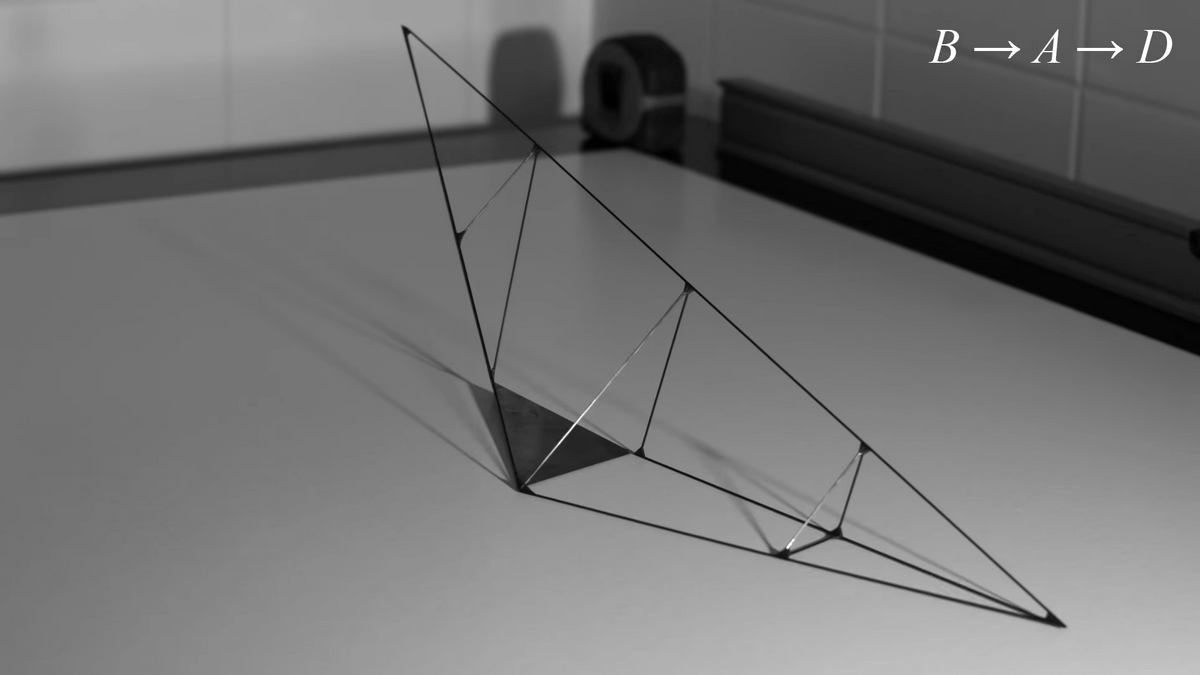Truth & Goodness
Fact or Fiction? 5 Techniques to Spot Manipulation Instantly
13 December 2025

No matter which way it tumbles, it always lands on the same side. This isn't magic; instead, it's the work of a Hungarian scientist. The tetrahedron, named Bille, is an extraordinary figure that culminates 40 years of research and solves an old mathematical riddle and geometric problem. However, this is no mere curiosity; the discovery can find practical applications in various fields of life. What are they?
It looks ordinary—just some geometric skeleton. Yet, it does something that seems impossible. It always falls onto the same side, regardless of the angle, force, or manner of its drop. This is no illusionist’s trick; instead, it’s the result of decades of mathematical persistence. Creating this figure, named Bille, took over 40 years. And now, a Hungarian scientist has led the way to solving one of the most challenging mathematical and geometric riddles.
The idea first emerged in the 1970s. The famous mathematician John Conway conjectured that it was possible to design a tetrahedron with only one stable equilibrium point. However, he himself gave up on building it, concluding that the angular momentum and forces acting on the body would make the goal unattainable.
Recommended reading: The Dyson Sphere and Life in Space: 7 Potential Locations
“This is the hardest problem, the highest category in geometry,” stated Professor Gábor Domokos from the Budapest University of Technology and Economics, as quoted by Daily Galaxy.
He, along with his student Gergő Almádi, breathed new life into Conway’s hypothesis. Their goal was to create a pyramid that consistently lands on a single face. In theory, it sounds simple. In practice, however, it proved a task at the very edge of possibility.
For its construction, they used an ultralight carbon tube skeleton and a very heavy tungsten carbide base. Crucially, each component needed balancing with microscopic precision. At one point, a single drop of glue nearly foiled the Hungarians’ efforts. Only after its removal did Bille begin to function perfectly. This demonstrates that some unsolved mathematical problems demand not only equations and models but also engineering mastery and a touch of obsession.
At first glance, Bille appears to be merely a mathematical experiment. But its unique construction could find applications in many fields. Domokos recalled, for example, the failure of Intuitive Machines’ Athena lander, which toppled over upon contact with the Moon’s surface. If it had utilized mechanics similar to Bille’s operation, perhaps this could have been avoided.
Furthermore, Domokos’s earlier discovery – the gömböc – inspired scientists from MIT, Harvard, and Novo Nordisk to create an insulin capsule. This capsule self-orients in the stomach and releases medication without the need for needles. This serves as further evidence that even seemingly intractable mathematical problems can lead to breakthroughs that impact health, technology, and daily life.
John Conway abandoned an idea that haunted him, but others persisted. Only today’s precision, materials, and digital modeling allowed them to solve a mathematical riddle from decades ago. They thus closed another chapter in the history of unsolved mathematical problems.
Today, this unassuming pyramid demonstrates that mathematics not only explains the world but also actively builds it, brick by brick.
Read the original article: Zagadka matematyczna sprzed lat rozwiązana. Węgier dokonał przełomu